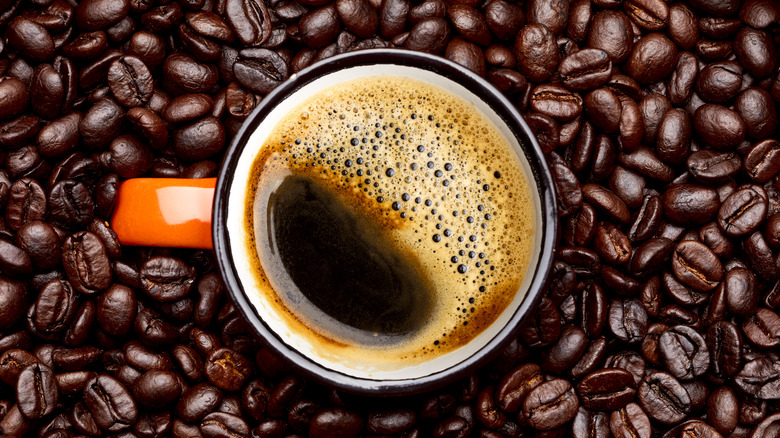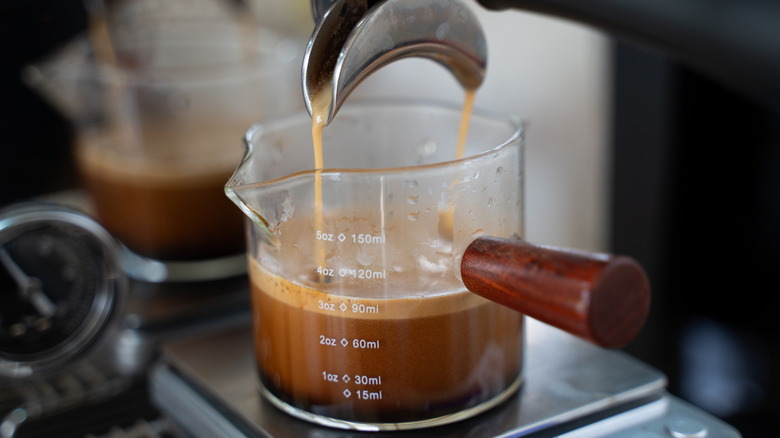The Secret To Getting More Crema On Your Espresso
If you've ever ordered a shot of espresso and noticed the thin layer of tan to light brown foam at the surface, you've witnessed the coffee's crema. Under the pressure of an espresso machine, the natural oils in coffee grounds mingle with hot water and carbon dioxide to create tiny air bubbles. But how, exactly, do you achieve the perfect barista-level of crema when making espresso at home? Andrea Allen — 2020 U.S. Barista Champ, 2021 World Barista Runner-Up, and co-founder of Onyx Coffee Lab – says it comes down to the type of coffee you use. "You can have more or less crema depending on the roast profile and also the freshness of the coffee," the coffee expert told Tasting Table.
When it comes to espresso, freshly roasted coffee brewed directly after grinding releases more of its flavorful natural oils that make up the foamy top layer, compared to beans roasted or ground prior and packed for shipment. While you're probably not going to roast your own coffee beans (though if you have the time, be our guest), you can finely grind your own espresso beans. According to Allen, a darker roast can also help. Since darker roasts typically contain more surface oils than lighter roasts, they can contribute to more crema formation. Additionally, a bag labeled as "espresso roast" will make for a good quality shot.
Crema creates a creamy flavor and mouthfeel
All-in-all, the foamy layer of crema offers more than a sleek visual appeal. While some baristas and at-home coffee aficionados debate the importance of crema, it's generally linked with well-made espresso because of its contribution to the coffee's sensory experience. When drinking espresso like an Italian pro, you'll notice the oils and minuscule bubbles from the foam contribute to a creamy mouthfeel, as well as bold aromatics and bitter coffee flavors. Still, some people make the case for scooping the crema off the top since it can impart too much bitterness to the espresso, overpowering other subtle flavors like earthy, caramel, or fruity notes. To counter this, others prefer to incorporate the crema by stirring it in with a spoon to make for a balanced flavor profile.
The biggest reason espresso tastes different at a coffee shop vs at home (other than the professional equipment, of course) is the practice and precision of the barista. Allen, who offers barista training at her cafe, lab, and roastery, shares coffee expertise with the public. Preparation methods — such as extracting the espresso under the right amount of time and pressure – can ensure an adequate amount of crema, which should ideally just be a thin top layer, about 10% of the espresso shot. At this ratio, the thin layer of foam will contribute the perfect smooth mouthfeel and taste, just like at your favorite coffeehouse.

